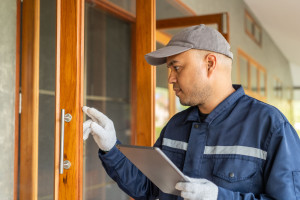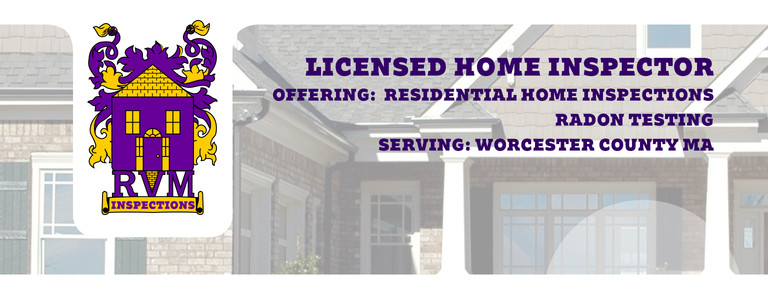 Buying or selling a home is a huge milestone, often filled with excitement and anxiety. One crucial step in the process is the professional home inspection, a thorough evaluation of the property’s condition by a licensed inspector. Whether you’re a buyer wanting to ensure your new home is safe and sound or a seller preparing for listing, understanding what happens during the inspection—and your part in it—can help make the experience smooth and productive.
Buying or selling a home is a huge milestone, often filled with excitement and anxiety. One crucial step in the process is the professional home inspection, a thorough evaluation of the property’s condition by a licensed inspector. Whether you’re a buyer wanting to ensure your new home is safe and sound or a seller preparing for listing, understanding what happens during the inspection—and your part in it—can help make the experience smooth and productive.
What Is a Home Inspection?
A home inspection is a detailed, visual examination of a property’s major systems and components, typically including the roof, foundation, electrical systems, plumbing, heating and cooling, windows and doors, insulation, and more. The goal is to uncover any existing or potential issues that could affect the home’s value, safety, or habitability.
It’s important to note that a home inspection is not an appraisal (which determines market value), nor is it a code compliance inspection (which checks against local building codes). Instead, it’s an expert’s opinion on the property’s condition at the time of inspection.
What to Expect During the Inspection
A professional home inspection typically lasts 2-4 hours, depending on the size and complexity of the home. Here’s a breakdown of what usually happens:
1. Arrival and Introduction
When the inspector arrives, they will introduce themselves, explain the process, and may ask you some questions about the home’s history or any known issues. This is your chance to provide relevant information and ask any questions you may have.
2. Exterior Inspection
The inspector starts outside, checking the condition of the roof, gutters, downspouts, siding, foundation, grading, windows, doors, and any exterior structures like decks or porches. They’ll look for signs of damage, water intrusion, pests, or structural issues.
3. Interior Inspection
Next, the inspector moves inside to examine walls, ceilings, floors, doors, windows, electrical outlets, plumbing fixtures, heating and cooling systems, insulation, and ventilation. They’ll test appliances (if included), check for leaks, and look for signs of mold, mildew, or pests.
4. Attic and Basement
The attic and basement (or crawlspace) are critical areas for inspection. The inspector will check for proper insulation, ventilation, signs of water damage, foundation cracks, or pest infestation. These areas can reveal hidden problems that aren’t obvious during a casual walkthrough.
5. Summary and Report
After the physical inspection, many inspectors offer a summary meeting where they discuss their findings, pointing out any major concerns or safety issues. You’ll receive a detailed written report, often with photos, explaining the condition of the home and recommendations for repairs or further evaluation.
Your Role as a Homeowner During the Inspection
Whether you’re buying or selling, your participation can significantly impact the inspection’s success and your peace of mind.
For Homebuyers:
Attend the Inspection: It’s highly recommended that you be present during the inspection. This is your chance to see issues firsthand, ask questions, and understand the home’s condition directly from the expert.
Prepare Questions: Before the inspection, make a list of concerns or specific areas you want the inspector to focus on. This helps you stay organized and ensures your priorities are addressed.
Take Notes and Photos: Bring a notebook or use your phone to jot down notes or capture images. This will help you remember details when reviewing the inspection report later.
Stay Open-Minded: Remember that no home is perfect. Some issues may be minor or normal wear and tear. Use the report to assess which problems are deal-breakers, which can be negotiated, and which can be addressed over time.
Follow Up: If the inspector recommends specialists (like a structural engineer or pest control expert), consider scheduling those evaluations before finalizing your purchase.
For Homeowners Selling a Home:
Be Transparent: Provide the inspector with access to all areas and answer questions honestly. This builds trust and can help you identify issues to fix before listing.
Pre-Inspection Option: Some sellers choose to have a pre-inspection done to proactively identify and address problems, making their home more attractive to buyers.
Prepare Your Home: Clear clutter, ensure utilities are on, and make sure all systems (like heating and plumbing) are operational for the inspector’s review.
Review the Report: After the inspection, review the findings carefully. If there are repair requests from the buyer, use the report as a guide to negotiate fairly.
Use the Inspection as a Marketing Tool: If your home passes with flying colors, you can share the inspection report to build buyer confidence and potentially speed up the sale.
Tips to Get the Most Out of Your Home Inspection
Choose a Qualified Inspector: Look for licensed, experienced professionals with good reviews or referrals. Ask about their certifications and what their inspection covers.
Don’t Rush: Take your time during the inspection walkthrough. Listen carefully and don’t hesitate to ask for clarification on anything you don’t understand.
Think Long Term: Use the inspection report not just to negotiate repairs but also as a maintenance checklist to keep your home in good shape.
Avoid DIY Diagnoses: While it’s tempting to Google issues during the inspection, remember the inspector’s expertise is invaluable. Let them identify problems, and then you can research solutions afterward.
A professional home inspection is a vital step in any real estate transaction, offering an objective look at the property’s condition and helping avoid costly surprises. As a homeowner or buyer, your role is active, informed, and collaborative: attend the inspection, ask questions, and use the insights to make confident decisions.
By understanding what to expect and how to participate effectively, you’ll not only protect your investment but also gain peace of mind knowing your home is a safe and sound place to live.








